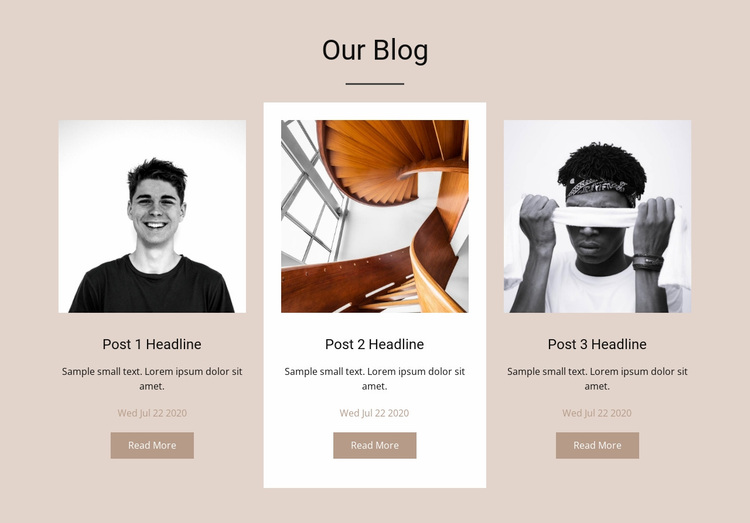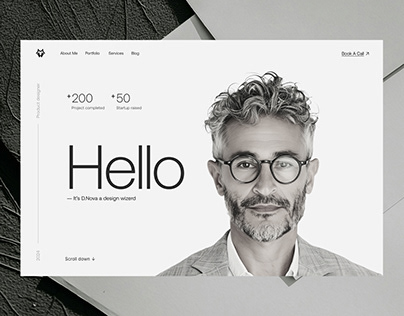Mobile-Friendly Website Design for Smooth Viewing on Any Device
Mobile-Friendly Website Design for Smooth Viewing on Any Device
Blog Article
Leading Tips for Developing an Impactful Website Style That Transforms
In today's electronic landscape, the value of an impactful web site layout can not be overemphasized, especially when it pertains to converting visitors right into clients. To achieve this, one have to consider a variety of elements, consisting of comprehending the target audience, prioritizing user experience, and maximizing for mobile systems. The critical usage of engaging call-to-actions and a well-defined aesthetic power structure plays a vital duty in guiding individuals with their journey. As we explore these essential aspects, it ends up being apparent that the success of your website hinges on greater than simply appearance; it needs a thoughtful strategy to design and capability.

Understand Your Target Market
Understanding your target audience is fundamental to reliable website layout, as it prepares for creating an appealing user experience. Recognizing who your customers are, including their demographics, choices, and habits, enables developers to tailor the website's web content, layout, and capability to meet details demands.
Carrying out thorough market study is critical in this procedure. Surveys, meetings, and analytics can provide valuable understandings into customer expectations and pain points. By compiling this information, designers can produce user personalities that represent different sectors of the target market, ensuring that style decisions are notified and pertinent.
Furthermore, comprehending the target market assists in picking appropriate style aspects such as color plans, typography, and images that reverberate with individuals. A website that speaks directly to its target market cultivates a feeling of link and count on, urging longer visits and higher conversion prices.
Inevitably, a user-centered approach to site style not only enhances user fulfillment but additionally sustains organization objectives by driving interaction and loyalty. By prioritizing the requirements and preferences of the target market, a site can efficiently serve its function and accomplish desired results.
Prioritize Individual Experience
To improve the general effectiveness of a web site, prioritizing individual experience (UX) is vital (Website Design). A properly designed UX guarantees that visitors can navigate the site easily, find details promptly, and involve with content meaningfully. This results in enhanced user complete satisfaction and higher conversion rates
Begin by carrying out user-friendly navigation. Menus ought to be practically structured, allowing users to situate crucial areas of the site with minimal initiative. Uniformity in layout elements, such as color design and font styles, fosters experience, which is important for maintaining customer involvement.
Additionally, consider the filling rate of your site. A delay of simply a few secs can result in significant drop-offs, as users are much less likely to await a slow-loading web page. Streamlining pictures and optimizing code can boost efficiency and keep visitors.
By focusing on customer experience, you not just create an extra enjoyable environment for visitors but additionally reinforce your brand name's reliability. Eventually, a focus on UX is an investment in the long-term success of your website.
Optimize for Mobile Devices
Enhancing for mobile phones is important in today's click electronic landscape, where an increasing variety of users access websites through smart devices and tablets. A mobile-friendly design not just enhances individual experience yet likewise plays a substantial duty in improving online search engine rankings. To achieve this, it is necessary to embrace a responsive design that instantly adapts to various display dimensions and positionings.

Loading speed is an additional important aspect; mobile users are generally much less individual and expect rapid accessibility to details. Enhance images and utilize browser caching to enhance performance. Ultimately, test your internet site on several gadgets and display resolutions check my source to determine and rectify any possible functionality issues. By prioritizing mobile optimization, you guarantee that your web site continues to be competitive and properly engages a broader target market.
Use Engaging Call-to-Actions
An internet site's effectiveness commonly pivots on its capability to assist site visitors towards wanted activities, making compelling call-to-actions (CTAs) necessary parts of layout. CTAs work as the essential points that guide individuals to engage with the website, whether that indicates buying, signing up for a newsletter, or downloading a resource.
To produce reliable CTAs, quality is extremely important. Use succinct language that clearly interacts the action you want the individual to take. Phrases such as "Start," "Subscribe Free," or "Store Now" not just share urgency but also eliminate ambiguity. The placement of CTAs is just as crucial; they must be purposefully placed throughout the page to ensure they are conveniently noticeable, specifically in high-traffic areas.
In addition, think about using directional hints, such as arrowheads or images, to lead customers towards these buttons. By concentrating on these aspects, businesses can substantially boost user involvement, driving conversions and eventually attaining their internet site's objectives.
Concentrate On Visual Power Structure
Efficient internet site layout counts heavily on a well-structured aesthetic hierarchy that guides users through material flawlessly. By organizing aspects in a way that prioritizes details, designers can improve customer experience and assist in decision-making. This includes making use of size, color, comparison, and spacing tactically to draw focus to the most important parts of a website.
The use of larger font styles for headings and subheadings develops a clear difference in between various areas, permitting users to scan material effortlessly. Furthermore, using different colors for switches and calls-to-action can capture individual focus and urge interaction. Whitespace is an additional crucial component; it avoids clutter and enables individuals to concentrate on crucial messages without diversions.
Images and graphics need to enhance the message while likewise adhering to the well established power structure, enhancing the overall message (Website Design). Consistency in style elements, such as color pattern and typography, more strengthens check the visual hierarchy, making navigation intuitive

Verdict
In conclusion, reliable site layout requires an extensive understanding of the target audience, prioritization of individual experience, and mobile optimization. Inevitably, a well-executed site layout serves as a vital part in driving individual activities and achieving organization objectives.
Report this page